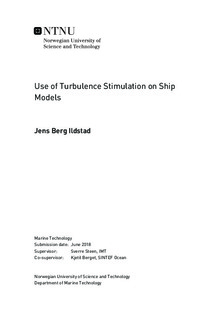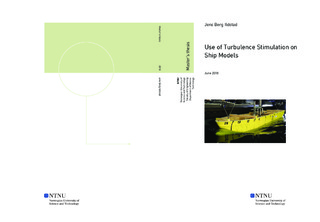| dc.description.abstract | In ship model testing the length based Reynolds number will be in the order of 100 times smaller than in full scale. As a consequence ship models often operates in the transition zone between laminar and turbulent flow. Thus, the boundary layer flow inmodel tests may well be partly or completely laminar if no turbulence stimulation device is applied, as opposed to a fully turbulent flow which is the case in full scale conditions. Hence, to provide a reliable extrapolation of model scale results to full scale, the need for turbulence stimulation in ship model testing is evident.
Various turbulence stimulation techniques are in use today. The most frequently used methods in ship model testing are tripwires, studs, sand strips and, to a limited extent, the Hama strip. Turbulence stimulation is today applied on a routine basis, largely based on assumptions and research conducted decades ago. The scope of this report is to both theoretically and experimentally provide a modern and scientific study on the field of turbulence stimulation in ship model testing.
To provide such a study a theoretical description of the laminar-turbulent transition and the role of turbulence stimulation in this context was carried out. In addition ship model experiments with the purpose of investigating any discrepancies in measured total resistance by the use of various turbulence stimulation techniques were performed.
The main parameters affecting laminar-turbulent transition are pressure gradient,wall roughness and background turbulence. Among these, only the wall roughness may be manipulated to cause an earlier transition in ship model testing. Test results indicate that all tested stimulation techniques are effective in generating turbulence at speeds relevant for ship models, when an appropriate roughness height is applied. Certain discrepancies in measured resistance between the stimulation techniques are evident over the entire speed range. Due to a good correlation with theoretical calculations, this discrepancy is believed to originate from differences in induced drag by each stimulation method.
Regarding placement of turbulence stimulation, some deviation from the recommended
procedures seems to be suitable, depending on the model size. For a large ship model (5 m | |

